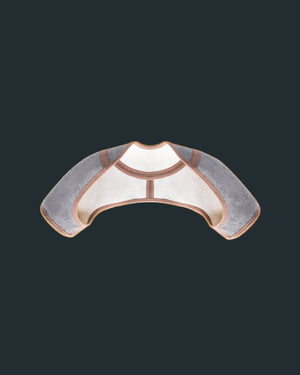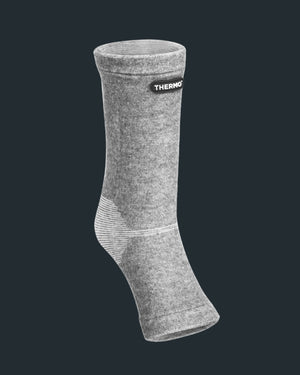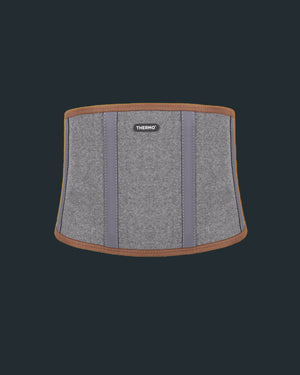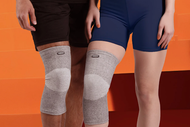Musculoskeletal pain, which includes muscle aches, affects up to 47% of the population, according to the journal Pain and Therapy. Whether the pain is temporary or chronic, it can diminish your quality of life.
This introductory guide to recovery attire will explain the basics of it, including how it works and how everyone—from athletes to the everyday exerciser—can benefit.
What Are the Advantages of Recovery Wear?
The key features of compression clothing provide many benefits, especially the more often you wear this apparel:
1. Increases Proprioception
Seamless garments like recovery attire are often recommended for children with proprioceptive disorders (which affect their sense of location and movement) because they can control pressure output. In the case of those with the disorder, compression clothing prevents joint hyperextension and excessive force.
Everyday recovery attire wearers will also have better proprioception. Controlling your pressure when exercising, standing on your feet during a long shift, or traveling can help you gauge how much pressure you use and minimize it where and when necessary.
This will further reduce strain on your muscles and joints.
2. Benefits Your Posture
This perk applies to compression clothing worn around the midsection. If you're someone who naturally slumps forward unless you're actively thinking about maintaining a rigid posture, the tightness of the apparel can force you into a more natural, upright position.
Taking care of your posture now can prevent long-term pain later.
3. Might Improve Endurance
While further studies are needed for definitive proof, there's anecdotal evidence that compression apparel can increase endurance. There have even been instances where jumpers have reported leaping further, likely due to their augmented stamina.
What's clearer is that recovery apparel will reduce your pain levels, allowing you to exercise longer, as you won't feel hampered by nagging aches.
4. Often Wicks Moisture
Recovery apparel made of nylon or polyester has moisture-wicking properties. Since you can wear it while exercising, the moisture resistance will help you feel fresh throughout your workout—well, as fresh as you can feel when sweating.
The greater benefit here is when wearing recovery apparel in everyday scenarios, like at the office or when running errands. You can stay as cool as a cucumber, even in high-stress situations, thanks to this fabric's hard work behind the scenes.
5. Flexible and Easy to Move In
There's a reason this athleisure trend has become a fashion staple. People like having flexibility, movement, and freedom with what they're wearing.
Although you wouldn't think flexibility would be conducive to skin-tight compression fabric, you'd be surprised! The versatile fabrics and semiconductor elements of recovery attire encourage natural movement, whether at the gym, the office, or at home.
You can bend, flex, turn, and twist with a full range of motion, achieving whatever physical tasks the day throws at you.
6. Less Pain, More Gain
Pain is one of the top reasons people don't get enough exercise. You might worry about re-aggravating an old injury or making your current pain even worse.
While you should always seek approval from your doctor before beginning a new exercise regimen or changing your routine, wearing recovery attire and exercising could be the key to reducing your pain on the treadmill, the weights, and beyond.
You will also have more stamina, increasing the efficacy of your workouts. When you finish with your exercise routine, you'll recover faster, allowing you to pick up where you left off sooner.
Shopping for Recovery Wear: Your Buyer's Guide
Are you ready to potentially heal faster, reduce muscle pain, and increase stamina naturally? Keep these pointers in mind as you begin your recovery apparel shopping journey.
Type
Thermo Recovery Wear specializes in all-over compression apparel. As you explore our selection of attire, you'll see gear for the upper, middle, and lower body.
How do you choose? Focus on the parts of your body with the most pain or those that tire out the quickest and need the longest recovery when exercising.
Fabric
Compression attire is made from several fabric types, sometimes blended together. It never hurts to check the label to see which percentage of fabric is where.
Avoid garments made of cotton, which is the opposite of moisture-resistant. The sweat will pool across the fabric and stick against your body, making you cold and interrupting your focus.
Comfort
There's a misconception about compression clothing that it has to be uncomfortable. It doesn't! Recovery apparel should fit tightly, but not so tight that you can't take a deep breath.
A high degree of stretch means the apparel is too big. If it feels like a vice grip on your body, it's too small.
Finding the right size is paramount as you start your recovery apparel journey. After all, if you're uncomfortable, that will impede how frequently you wear the compression wear, impacting your results.
Flexibility
A firm fit is a must, but you should still have all the flexibility you would in any other apparel when wearing compression gear. If you can't twist your abdomen, lift your arms and legs, or otherwise move your body, that's a sign the gear is a poor fit.
Many compression garments come in standard clothing sizes, so use your base size as an indicator, but consider sizing down or up depending on the manufacturer and fit.
Price
The last consideration is the cost of recovery apparel. Since it's specialty gear, it will cost more than your average shirt or pair of pants, but with the advantages of recovering naturally.
While it's always a worthwhile purchase, budgeting for compression clothing will help you spend within a range you're comfortable with.
How Does Recovery Wear Actually Work?
Recovery wear is compression clothing designed to alleviate muscle aches, promote healing, and accelerate recovery. The apparel fits tightly over your body, and it serves different purposes depending on when you wear it.
For example, when exercising, recovery apparel concentrates blood flow across the body. The oxygenated blood reaches the tissues, maintaining your stamina. You might notice you can extend the duration of your workouts without changing anything else about your diet or lifestyle.
The tightness of the apparel might also improve your posture.
The compression garments get to work when you wrap up a tough workout. Part of how recovery wear can accelerate natural healing is by increasing your body temperature when wearing the garment.
The skin-tightness of the compression apparel does not let oxygen in, so your skin underneath can heat up quickly, especially when exercising. The tissues that become warmer receive an influx of blood flow that starts the healing process.
The increased muscle pressure from wearing compression clothing might even push off delayed-onset muscle pain, allowing you to pick up your exercise routine wherever you left off the next day or the day after.
A Fascinating Glimpse Behind Recovery Wear Technology
Thermo Recovery Wear's apparel features semiconductor elements right in the fabric. The textile looks like your average fabric but makes infrared energy out of your body heat.
You can think of the infrared technology as sitting in a sauna, with about an hour of wear equivalent to 30 minutes of "sauna time," as it were.
How do you feel when you go to the sauna? Loose, limber, and like you can take on the world, right? That's the same sensation you can experience when wearing Thermo Recovery Wear.
Your cells receive more oxygen and your blood more circulation, which can result in less pain, swelling, and a smoother, more streamlined recovery. This apparel may also help rebuild muscles after exercise.
Who Is Recovery Wear For?
Recovery attire is not exclusively worn at the gym or in-home fitness zone. You can and should wear it in everyday scenarios, such as sitting sedentary at the office.
Here's who benefit most from this apparel:
- Chronic pain sufferers
- Athletes
- Those recovering from surgery who are at risk of blood clots
- Those with frequent ankle swelling from a past injury or condition
- Endurance runners
- Those with edema and/or varicose veins
- Action sports players
- Travelers
- Pregnant women
- The elderly
Frequently Asked Questions
Does Recovery Apparel Really Work?
A 2022 study in Scientific Reports had 22 participants engage in resistance training, with some wearing recovery clothes and others skipping them. The study concluded that "wearing compression for at least four hours after exercise is enough to see a recovery benefit."
Should You Sleep in Recovery Tights?
You can if you want. However, since your body's blood doesn't move the same way while lying down as it does when standing up, there's little benefit to this choice.
Is It Okay to Wear Compression Apparel All Day?
You can wear compression apparel all day as needed. Keeping the attire on a few hours after exercise will maximize your benefits.
Wrapping Up
Recovery wear is compression apparel designed for athletes, those recovering from surgery, exercisers, the elderly, and those with chronic pain.
But our line takes things further by integrating semiconductors in the fabric, which, together with its tightness, can warm the area, promoting healing. You will also enjoy greater blood circulation, reducing pain and increasing recovery.
Try healing the natural way and explore Thermo Recovery Wear's recovery apparel today.






